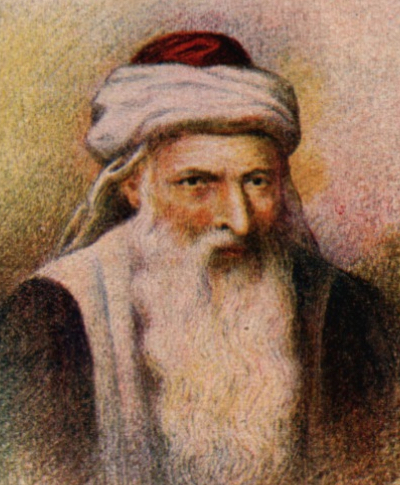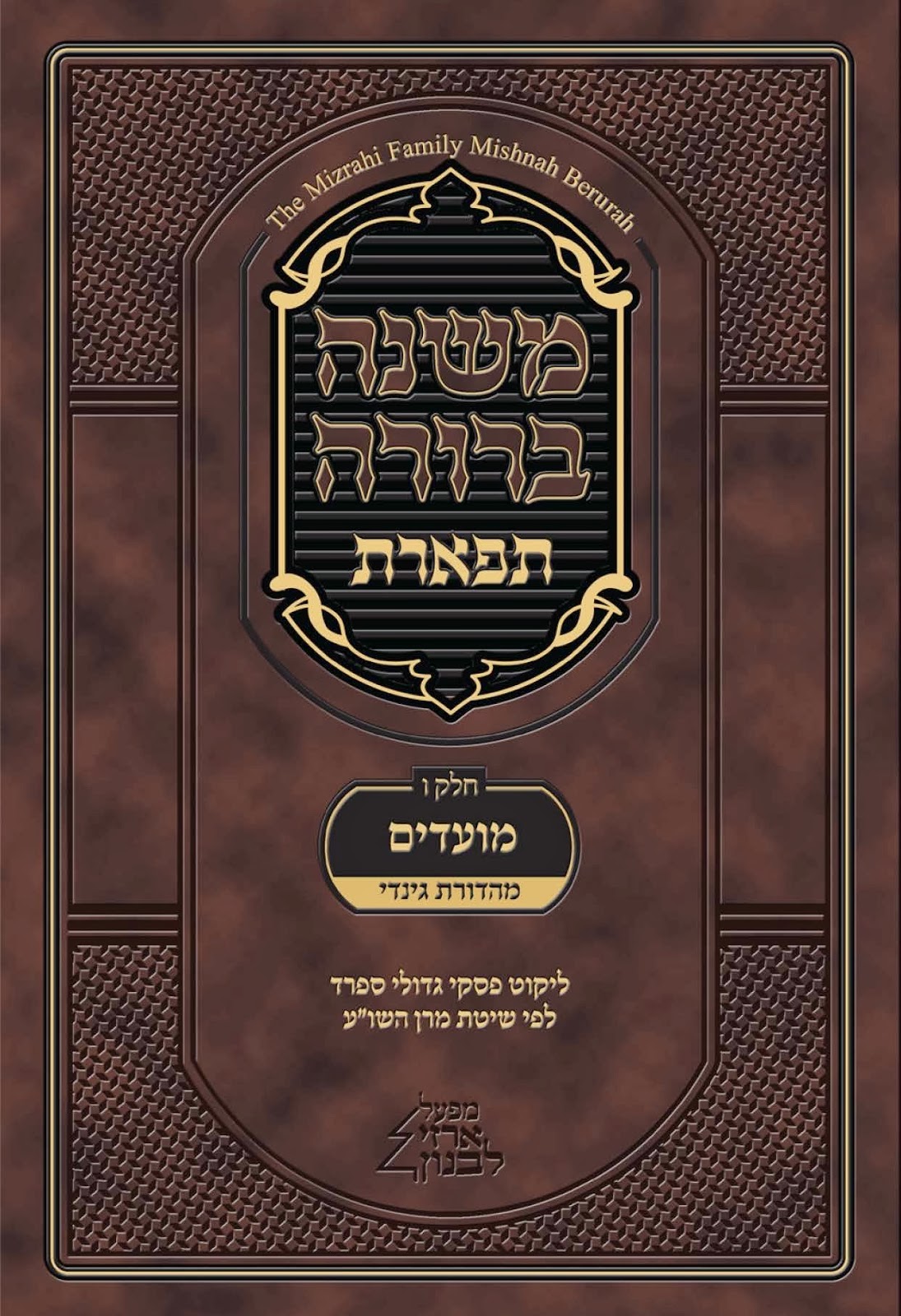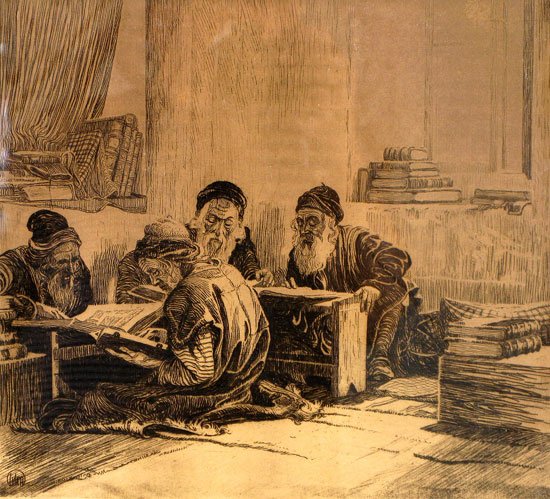|
Chayei Adam
Chayei Adam (חיי אדם "The Life of Man") is a work of Jewish law by Rabbi Avraham Danzig (1748–1820), dealing with the laws discussed in the Orach Chayim section of the Shulchan Aruch. It is divided into 224 sections - 69 dealing with daily conduct and prayer, and 155 with Shabbos (Sabbath) and Yom Tov (holidays). Chayei Adam was intended primarily "for the cultured layman", as opposed to rabbinic scholars, and the work is thus presented in a readily accessible form. In many cities, societies were formed for the purpose of studying Chayei Adam. In this work, Rabbi Danzig collected and critically sifted the '' Acharonic'' material in the field of the Halakha written in the more than two and a half centuries since the appearance of the Shulchan Aruch. A parallel work ''Nishmas Adam'', published together with Chayei Adam, discusses the halachic issues in greater depth. The two are usually printed together. The scholarship of the work is evidenced by the fact that Rabbi Chaim V ... [...More Info...] [...Related Items...] OR: [Wikipedia] [Google] [Baidu] |
Halakha
''Halakha'' (; he, הֲלָכָה, ), also transliterated as ''halacha'', ''halakhah'', and ''halocho'' ( ), is the collective body of Jewish religious laws which is derived from the written and Oral Torah. Halakha is based on biblical commandments ('' mitzvot''), subsequent Talmudic and rabbinic laws, and the customs and traditions which were compiled in the many books such as the ''Shulchan Aruch''. ''Halakha'' is often translated as "Jewish law", although a more literal translation of it might be "the way to behave" or "the way of walking". The word is derived from the root which means "to behave" (also "to go" or "to walk"). ''Halakha'' not only guides religious practices and beliefs, it also guides numerous aspects of day-to-day life. Historically, in the Jewish diaspora, ''halakha'' served many Jewish communities as an enforceable avenue of law – both civil and religious, since no differentiation of them exists in classical Judaism. Since the Jewish Enlightenment (''Hask ... [...More Info...] [...Related Items...] OR: [Wikipedia] [Google] [Baidu] |
Avraham Danzig
Avraham Danzig (ben Yehiel Michael, 1748—1820; אברהם דנציג) was a rabbi, ''posek'' (legal decisor) and Halakha#Codes of Jewish law, codifier, best known as the author of the works of halakha, Jewish law called ''Chayei Adam'' and ''Chochmat Adam''. He is sometimes referred to as "the ''Chayei Adam''". Biography Danzig was born in Danzig (Gdańsk), Poland (hence his name), in 1747 or 1748 into a prominent rabbinic family. When he was fourteen, his father sent him to study at the Prague ''yeshivah'', after exacting a promise from him "that he would not mingle with the Haskalah, Moderns" who were then gradually coming into prominence through the influence of Moses Mendelssohn. He studied in Prague for four years under Rabbi Yechezkel Landau and Rabbi Joseph Liebermann. He was then offered a position as rabbi in Vilnius, Vilna, but declined, earning his livelihood as a merchant (frequenting the Leipzig Trade Fair, fairs of Leipzig and Königsberg - which are referred to in ... [...More Info...] [...Related Items...] OR: [Wikipedia] [Google] [Baidu] |
Orach Chayim
Orach Chayim, (''manner/way of life'') is a section of Rabbi Jacob ben Asher's compilation of Halakha (Jewish law), Arba'ah Turim. This section addresses aspects of Jewish law pertinent to the Hebrew calendar (be it the daily, weekly, monthly, or annual calendar). Rabbi Yosef Karo modeled the framework of the ''Shulkhan Arukh'' (שולחן ערוך), his own compilation of practical Jewish law, after the ''Arba'ah Turim.'' Many later commentators used this framework, as well. Thus, ''Orach Chayim'' in common usage may refer to another area of halakha, separate from Rabbi Jacob ben Asher's compilation. Orach Chayim deals with, but is not limited to: *Washing the hands in the morning, *Tefillin *Tzitzit (ritual fringes), *Prayer, *Sabbath, *Festivals, *Torah reading in synagogue. Commentaries on the Shulchan Aruch - Orach Chayim * Taz (Turei Zohov) - by Rabbi David HaLevi Segal * Magen Avraham - by Rabbi Avraham Gombiner * Biur HaGra - by the Vilna Gaon * Pri Megadim - by Rabbi Jo ... [...More Info...] [...Related Items...] OR: [Wikipedia] [Google] [Baidu] |
Shulchan Aruch
The ''Shulchan Aruch'' ( he, שֻׁלְחָן עָרוּך , literally: "Set Table"), sometimes dubbed in English as the Code of Jewish Law, is the most widely consulted of the various legal codes in Judaism. It was authored in Safed (today in Israel) by Joseph Karo in 1563 and published in Venice two years later. Together with its commentaries, it is the most widely accepted compilation of Jewish law ever written. The ''halachic'' rulings in the ''Shulchan Aruch'' generally follow Sephardic law and customs, whereas Ashkenazi Jews generally follow the halachic rulings of Moses Isserles, whose glosses to the ''Shulchan Aruch'' note where the Sephardic and Ashkenazi customs differ. These glosses are widely referred to as the ''mappah'' (literally: the "tablecloth") to the ''Shulchan Aruch's'' "Set Table". Almost all published editions of the ''Shulchan Aruch'' include this gloss, and the term "Shulchan Aruch" has come to denote ''both'' Karo's work as well as Isserles', with Karo ... [...More Info...] [...Related Items...] OR: [Wikipedia] [Google] [Baidu] |
Shabbat
Shabbat (, , or ; he, שַׁבָּת, Šabbāṯ, , ) or the Sabbath (), also called Shabbos (, ) by Ashkenazim, is Judaism's day of rest on the seventh day of the week—i.e., Saturday. On this day, religious Jews remember the biblical stories describing the creation of the heaven and earth in six days and the redemption from slavery and The Exodus from Egypt, and look forward to a future Messianic Age. Since the Jewish religious calendar counts days from sunset to sunset, Shabbat begins in the evening of what on the civil calendar is Friday. Shabbat observance entails refraining from work activities, often with great rigor, and engaging in restful activities to honour the day. Judaism's traditional position is that the unbroken seventh-day Shabbat originated among the Jewish people, as their first and most sacred institution. Variations upon Shabbat are widespread in Judaism and, with adaptations, throughout the Abrahamic and many other religions. According to ''halakha ... [...More Info...] [...Related Items...] OR: [Wikipedia] [Google] [Baidu] |
Jewish Holidays
Jewish holidays, also known as Jewish festivals or ''Yamim Tovim'' ( he, ימים טובים, , Good Days, or singular , in transliterated Hebrew []), are holidays observed in Judaism and by JewsThis article focuses on practices of mainstream Rabbinic Judaism. Karaite Judaism#The calendar, Karaite Jews and Samaritans#Samaritanism, Samaritans also observe the biblical festivals, but not in an identical fashion and not always at exactly the same time. throughout the Hebrew calendar. They include religious, cultural and national elements, derived from three sources: biblical '' mitzvot'' ("commandments"), rabbinic mandates, and the history of Judaism and the State of Israel. Jewish holidays occur on the same dates every year in the Hebrew calendar, but the dates vary in the Gregorian. This is because the Hebrew calendar is a lunisolar calendar (based on the cycles of both the sun and moon), whereas the Gregorian is a solar calendar. General concepts Groupings Certain term ... [...More Info...] [...Related Items...] OR: [Wikipedia] [Google] [Baidu] |
Layman
In religious organizations, the laity () consists of all members who are not part of the clergy, usually including any non-ordained members of religious orders, e.g. a nun or a lay brother. In both religious and wider secular usage, a layperson (also layman or laywoman) is a person who is not qualified in a given profession or does not have specific knowledge of a certain subject. The phrase "layman's terms" is used to refer to plain language that is understandable to the everyday person, as opposed to specialised terminology understood only by a professional. Some Christian churches utilise lay preachers, who preach but are not clergy. The Church of Jesus Christ of Latter-day Saints uses the term ''lay priesthood'' to emphasise that its local congregational leaders are unpaid. Terms such as ''lay priest'', ''lay clergy'' and ''lay nun'' were once used in certain Buddhist cultures to indicate ordained persons who continued to live in the wider community instead of retiring to ... [...More Info...] [...Related Items...] OR: [Wikipedia] [Google] [Baidu] |
Acharonim
In Jewish law and history, ''Acharonim'' (; he, אחרונים ''Aḥaronim''; sing. , ''Aḥaron''; lit. "last ones") are the leading rabbis and poskim (Jewish legal decisors) living from roughly the 16th century to the present, and more specifically since the writing of the ''Shulchan Aruch'' (Hebrew: , "Set Table", a code of Jewish law) in 1563 CE. The ''Acharonim'' follow the ''Rishonim'', the "first ones"—the rabbinic scholars between the 11th and the 16th century following the ''Geonim'' and preceding the ''Shulchan Aruch''. The publication of the ''Shulchan Aruch'' thus marks the transition from the era of Rishonim to that of Acharonim. Consequences for Halakhic change The distinction between the ''Acharonim'', ''Rishonim'' and ''Geonim'' is meaningful historically. According to the widely held view in Orthodox Judaism, the Acharonim generally cannot dispute the rulings of rabbis of previous eras unless they find support from other rabbis in previous eras. Yet the oppo ... [...More Info...] [...Related Items...] OR: [Wikipedia] [Google] [Baidu] |
Chaim Volozhin
Chaim of Volozhin (also known as Chaim ben Yitzchok of Volozhin or Chaim Ickovits; January 21, 1749 – June 14, 1821)Jewish Encyclopedia Bibliography: Fuenn, Keneset Yisrael, pp. 347–349; idem, Kiryah Ne'emanah, pp. 156–158; Lewin, Aliyyot Eliyahu (ed. Stettin), p. 70; Schechter, Studies in Judaism, p. 85, Philadelphia, 1896; Jatzkan, Rabbenu Eliyah mi-Wilna, pp. 100–106, St. Petersburg, 1901; Ha-Shahar, vi. 96; Eliezer of Botoshan, Kin'at Soferim, p. 796; Ahiasaf, 5654, p. 260, and 5699, p. 81; Reines, Ozar ha-Sifrut, iii.; Ha-Kerem, 1887, pp. 179–181; David Tebele, Bet Dawid, Preface, Warsaw, 1854; Maginne Erez, Preface, Shklov, 1803; Zedner, Cat. Hebr. Books Brit. Mus. pp. 179, 555.S was a rabbi, Talmudist, and ethicist. Popularly known as "Reb Chaim Volozhiner" or simply as "Reb Chaim", he was born in Volozhin (a.k.a. Vałožyn or Valozhyn) when it was a part of the Polish–Lithuanian Commonwealth. He died there wh ... [...More Info...] [...Related Items...] OR: [Wikipedia] [Google] [Baidu] |
Mishnah Berurah
The ''Mishnah Berurah'' ( he, משנה ברורה "Clear Teaching") is a work of ''halakha'' (Jewish law) by Rabbi Yisrael Meir Kagan (Poland, 1838–1933, also known as ''Chofetz Chaim''). It is a commentary on ''Orach Chayim'', the first section of the ''Shulchan Aruch'' which deals with laws of prayer, synagogue, Shabbat and holidays, summarizing the opinions of the ''Acharonim'' (post-Medieval rabbinic authorities) on that work. The title comes from b. Shabbat 139a, "They will rove, seeking the word of the LORD, but they will not find it (Amos 8:12) -- they will not find clear teaching and clear law in one place." Contents The ''Mishnah Berurah'' is traditionally printed in 6 volumes alongside selected other commentaries. The work provides simple and contemporary explanatory remarks and citations to daily aspects of ''halakha''. It is widely used as a reference and has mostly supplanted the Chayei Adam and the Aruch HaShulchan as the primary authority on Jewish daily living am ... [...More Info...] [...Related Items...] OR: [Wikipedia] [Google] [Baidu] |
Hebrew Language
Hebrew (; ; ) is a Northwest Semitic language of the Afroasiatic language family. Historically, it is one of the spoken languages of the Israelites and their longest-surviving descendants, the Jews and Samaritans. It was largely preserved throughout history as the main liturgical language of Judaism (since the Second Temple period) and Samaritanism. Hebrew is the only Canaanite language still spoken today, and serves as the only truly successful example of a dead language that has been revived. It is also one of only two Northwest Semitic languages still in use, with the other being Aramaic. The earliest examples of written Paleo-Hebrew date back to the 10th century BCE. Nearly all of the Hebrew Bible is written in Biblical Hebrew, with much of its present form in the dialect that scholars believe flourished around the 6th century BCE, during the time of the Babylonian captivity. For this reason, Hebrew has been referred to by Jews as '' Lashon Hakodesh'' (, ) since an ... [...More Info...] [...Related Items...] OR: [Wikipedia] [Google] [Baidu] |
Rabbinic Legal Texts And Responsa
Rabbinic Judaism ( he, יהדות רבנית, Yahadut Rabanit), also called Rabbinism, Rabbinicism, or Judaism espoused by the Rabbanites, has been the mainstream form of Judaism since the 6th century CE, after the codification of the Babylonian Talmud. Rabbinic Judaism has its roots in Pharisaic Judaism and is based on the belief that Moses at Mount Sinai received both the Written Torah (''Torah she-be-Khetav'') and the Oral Torah (''Torah she-be-al Peh'') from God. The Oral Torah, transmitted orally, explains the Written Torah. At first, it was forbidden to write down the Oral Torah because the rabbis feared that it would become rigid and lose its flexibility, but after the destruction of the Second Temple they decided to write it down in the Talmud and other rabbinic texts. Rabbinic Judaism contrasts with the Sadducees, Karaite Judaism and Samaritanism, which do not recognize the Oral Torah as a divine authority nor the rabbinic procedures used to interpret Jewish scripture. ... [...More Info...] [...Related Items...] OR: [Wikipedia] [Google] [Baidu] |



.jpg)



